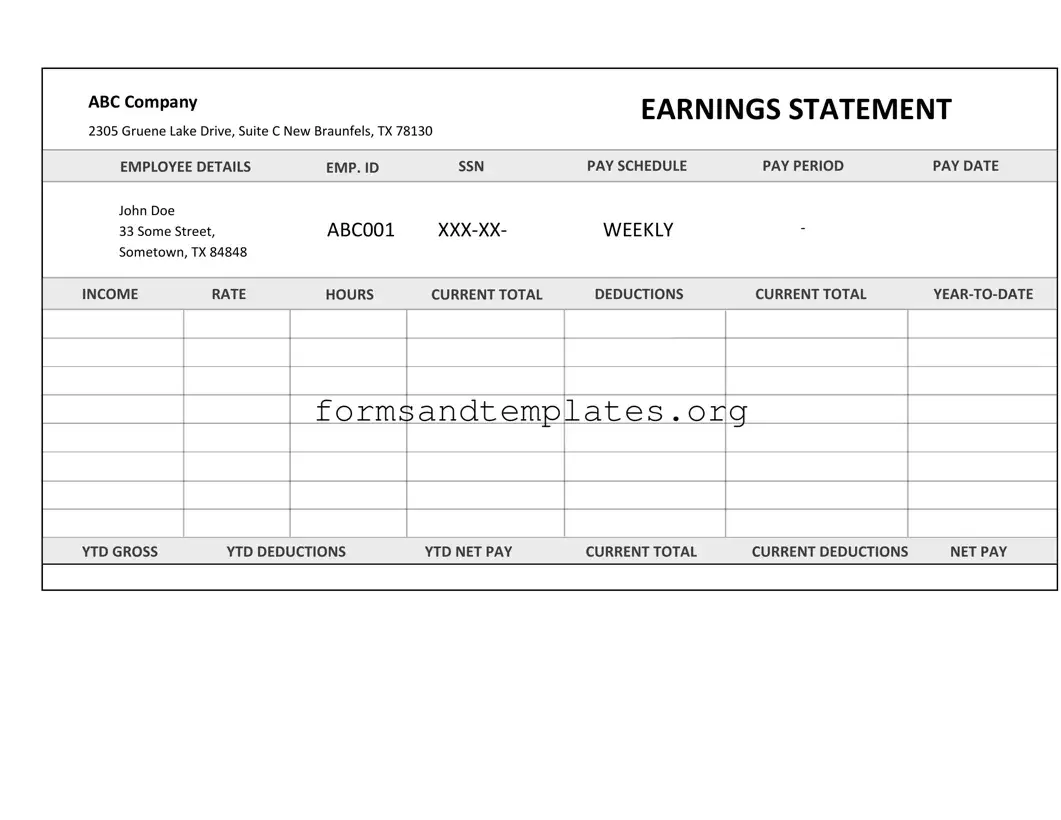In the realm of freelance work and independent contracting, clear financial documentation is essential for both contractors and the businesses that hire them. The Independent Contractor Pay Stub form serves as a crucial tool in this regard, providing a transparent record of earnings for services rendered. This form typically includes vital details such as the contractor's name, the pay period, and the total amount earned, ensuring that all parties are on the same page regarding compensation. Additionally, it may outline deductions, if any, which can include taxes or fees, giving contractors a comprehensive view of their net earnings. By utilizing this pay stub, independent contractors can maintain organized financial records, which is particularly beneficial come tax season. Furthermore, businesses benefit from issuing pay stubs, as it fosters trust and accountability, making the payment process smoother and more professional. Understanding the components and importance of this form can empower both contractors and employers, paving the way for a more efficient working relationship.
